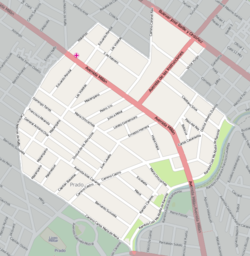
Montevideo is the capital and largest city of Uruguay. According to the 2011 census, the city proper has a population of 1,319,108 in an area of 201 square kilometres (78 sq mi). The southernmost capital city in the Americas, Montevideo is situated on the southern coast of the country, on the northeastern bank of the Río de la Plata.

The Catholic Church in Uruguay is part of the worldwide Catholic Church, under the spiritual leadership of the Pope in Rome.

Prado is a barrio and a major public park in Montevideo, Uruguay. Together with Nueva Savona, they form the Prado - Nueva Savona composite barrio. Prado is also the name given to all the park areas on both sides of Miguelete Creek, limited by the bridge of Agraciada Avenue over the river to the south and by Millan Avenue to the northeast.
Uruguayans or Uruguayan people are people identified with the country of Uruguay, through citizenship or descent. Uruguay is home to people of different ethnic origins. As a result, many Uruguayans do not equate their nationality with ethnicity, but with citizenship and their allegiance to Uruguay. Colloquially, primarily among other Spanish-speaking Latin American nations, Uruguayans are also referred to as "orientals [as in Eastern]".
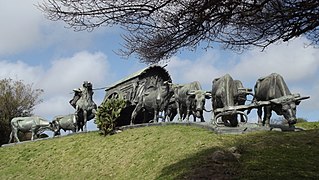
Parque Batlle, formerly Parque de los Aliados, is a barrio and a major public central park in Montevideo, Uruguay. It is named in honour of José Batlle y Ordóñez, President of Uruguay from 1911–1915.

Belvedere is a barrio of Montevideo, Uruguay. An area known as Paso Molino, which starts in the Prado and extends into Belvedere, is a frequented shopping venue.
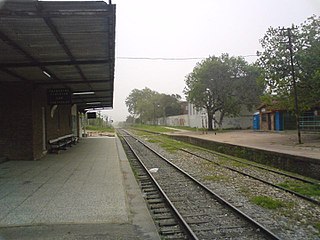
Sayago is a barrio of Montevideo, Uruguay.

Aires Puros is a barrio of Montevideo, Uruguay.

Parque Prado is the largest of Montevideo's six principal public parks. Established in 1873, it covers an area of 106 hectares and is located in the barrio of Prado. Located in the northern part of the city, the Miguelete Creek flows through the neighbourhood and park of the same name.
Julio Vilamajó Echaniz was one of the best known Uruguayan architects. He was a member of the Board of Design Consultants for the construction of the United Nations headquarters together with Le Corbusier and Oscar Niemeyer.
Armonía Liropeya Etchepare Locino was a Uruguayan feminist, pedagogue, novelist and short story writer. She was sometimes referred to as Armonía Etchepare de Henestrosa or, by her pseudonym, Armonía Somer. A member of the literary movement Generación del 45, Somers wrote in a transgressive style. Her contemporaries included Silvina Ocampo, Griselda Gambaro, Luisa Valenzuela, Elena Garro, and Peri Rossi.
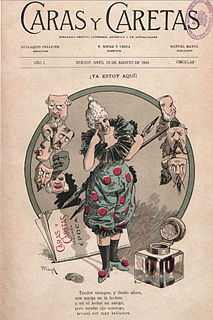
Caras y Caretas is a weekly magazine of Argentina published from 1898 to 1941 in its first period of existence. There was a previous version published in Uruguay between 1890 and 1897. Caras y Caretas was relaunched in 2005 under the direction of historian Felipe Pigna, having been published since then.
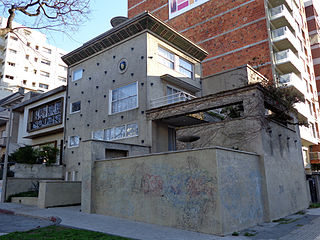
The Vilamajó House Museum is located in the house that the architect Julio Vilamajó built for his family in 1930 in Montevideo, being the first modern dwelling to open its doors as a museum house in Uruguay. The Vilamajó House Museum is the materialization of an initiative of the School of Architecture at the University of the Republic which, in agreement with the Ministry of Education and Culture, owner of the property, opened its doors to the public in May 2012. The museum has been envisaged as a research and promotion center addressing the life and work of Vilamajó and of architecture and design as disciplines open to the society.

Museo de la Memoria (MUME) is a museum in Montevideo, Uruguay dedicated to the memory of those or died or were "disappeared" during the Uruguayan dictatorship of 1973 to 1985.
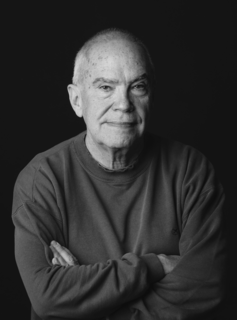
Andrés Neumann is a polyglot design thinker, and performing arts and creative and cultural industries professional, born in Bolivia, raised in Uruguay and established in Europe.
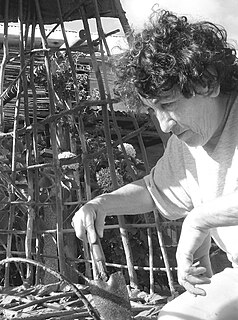
Elvira Lacy Duarte Cardoso was a Uruguayan visual artist.
Alejandra González Soca is an Uruguayan visual artist, psychologist, and teacher.
Andres Rossi was a Spanish artist. He worked as a painter, draughtsman, print maker, sculptor and writer in Madrid and Seville.

